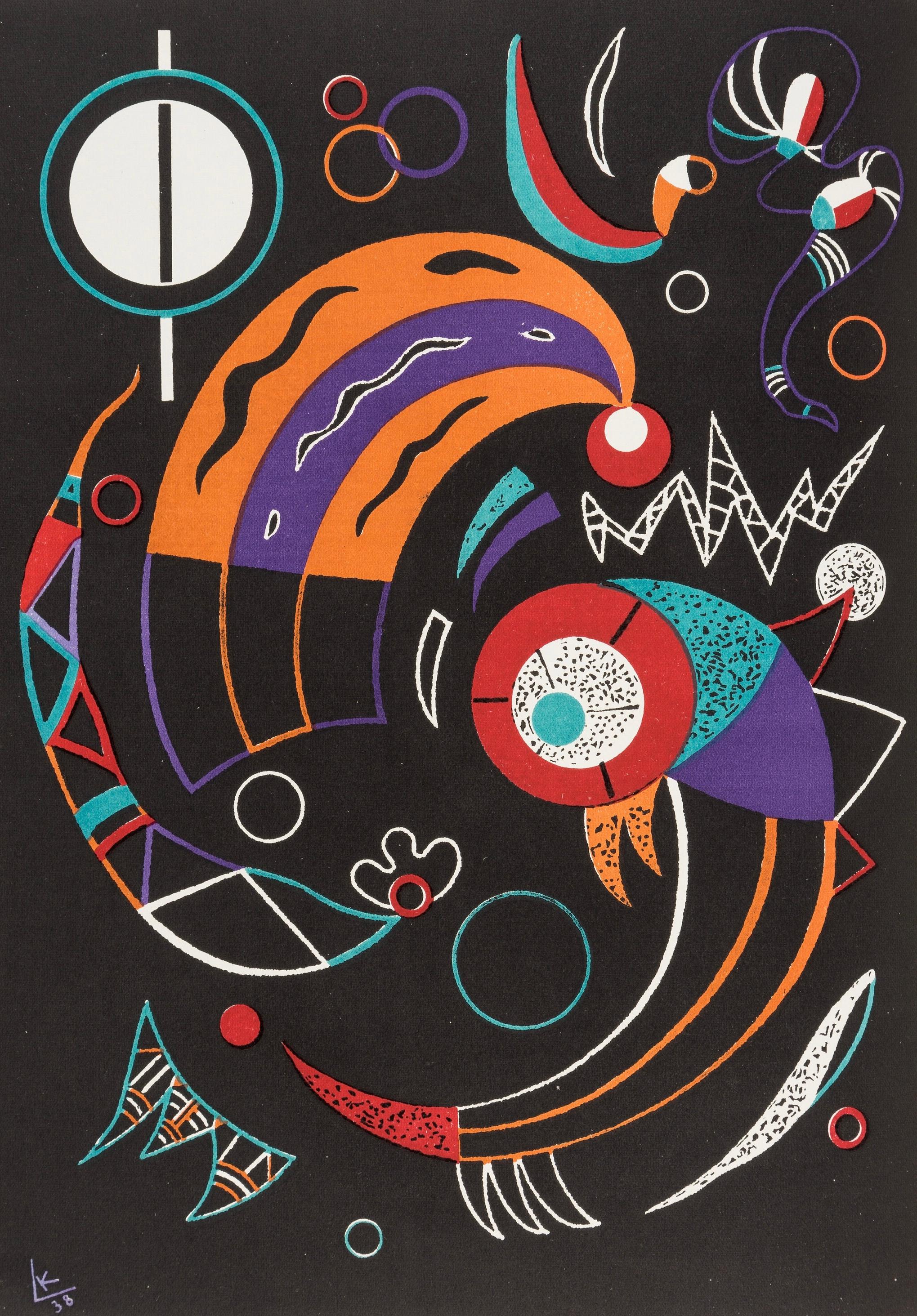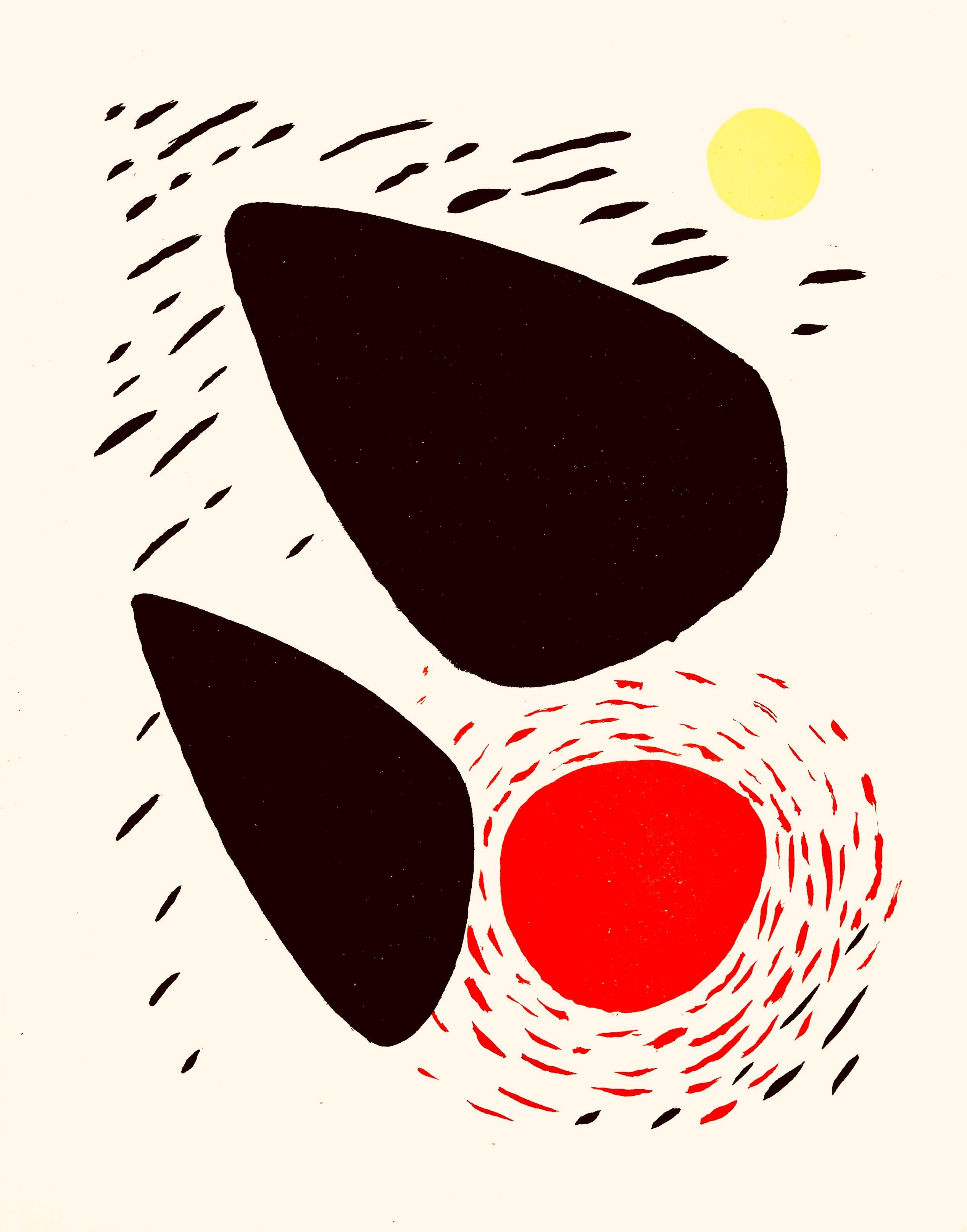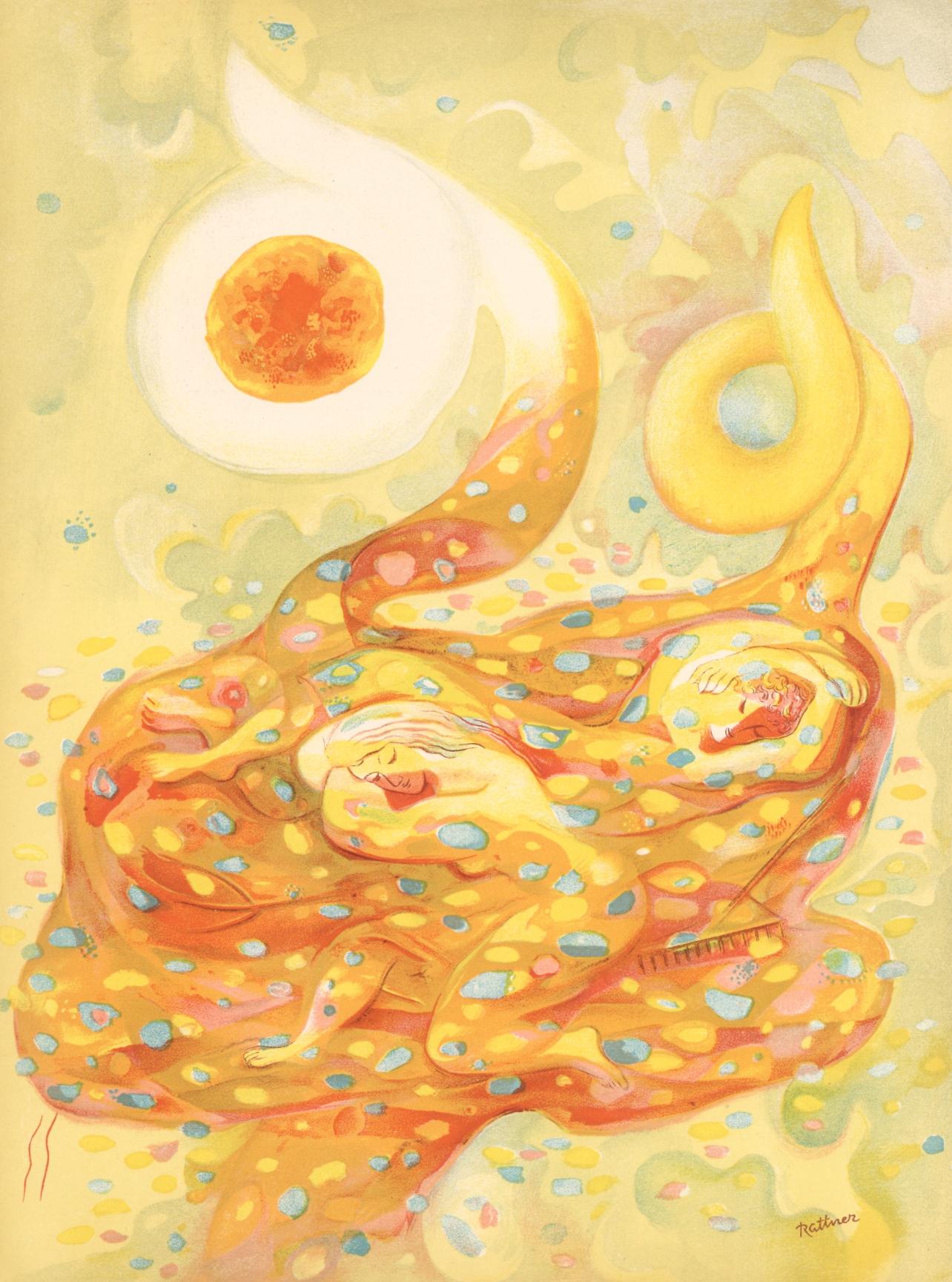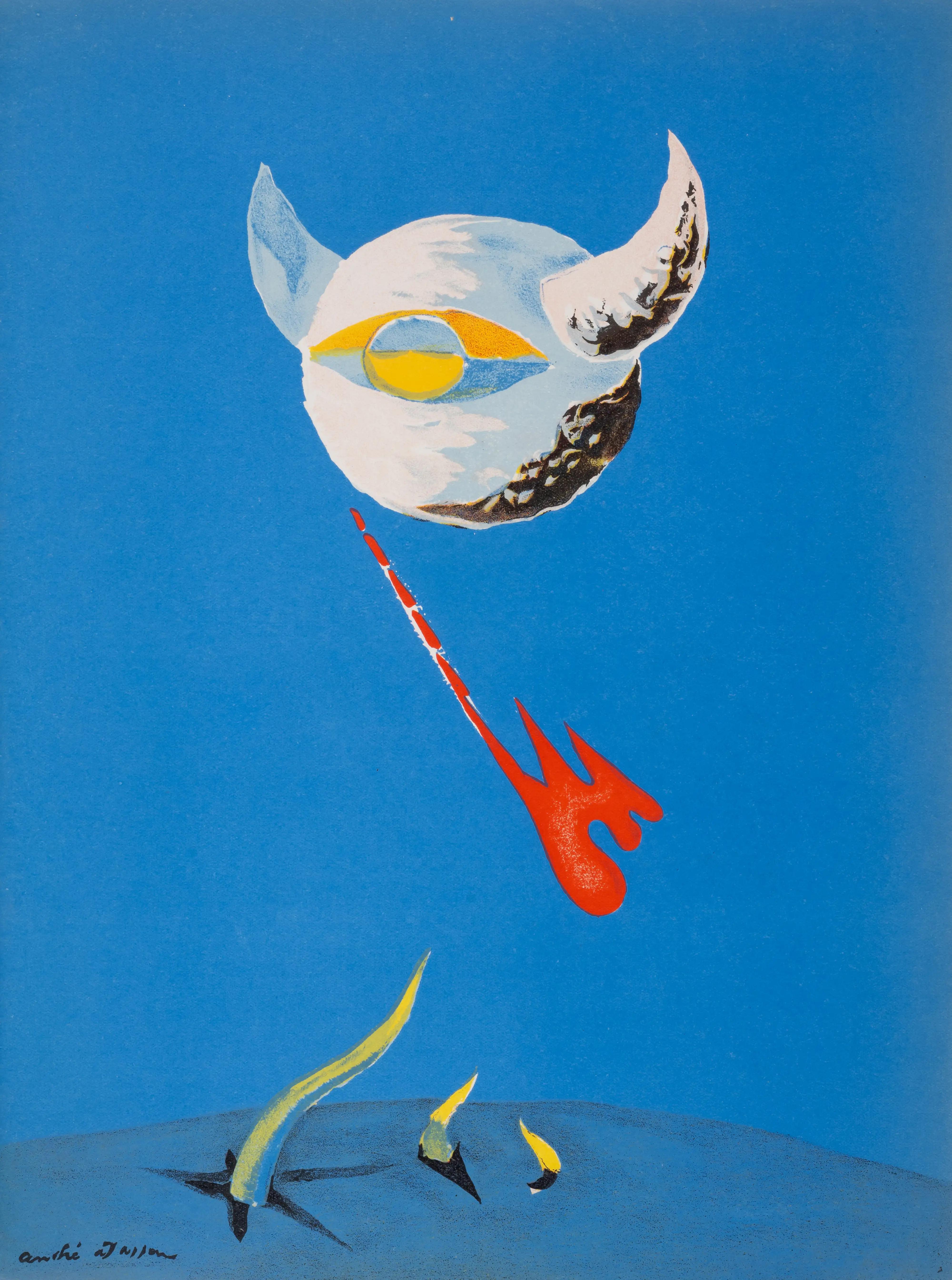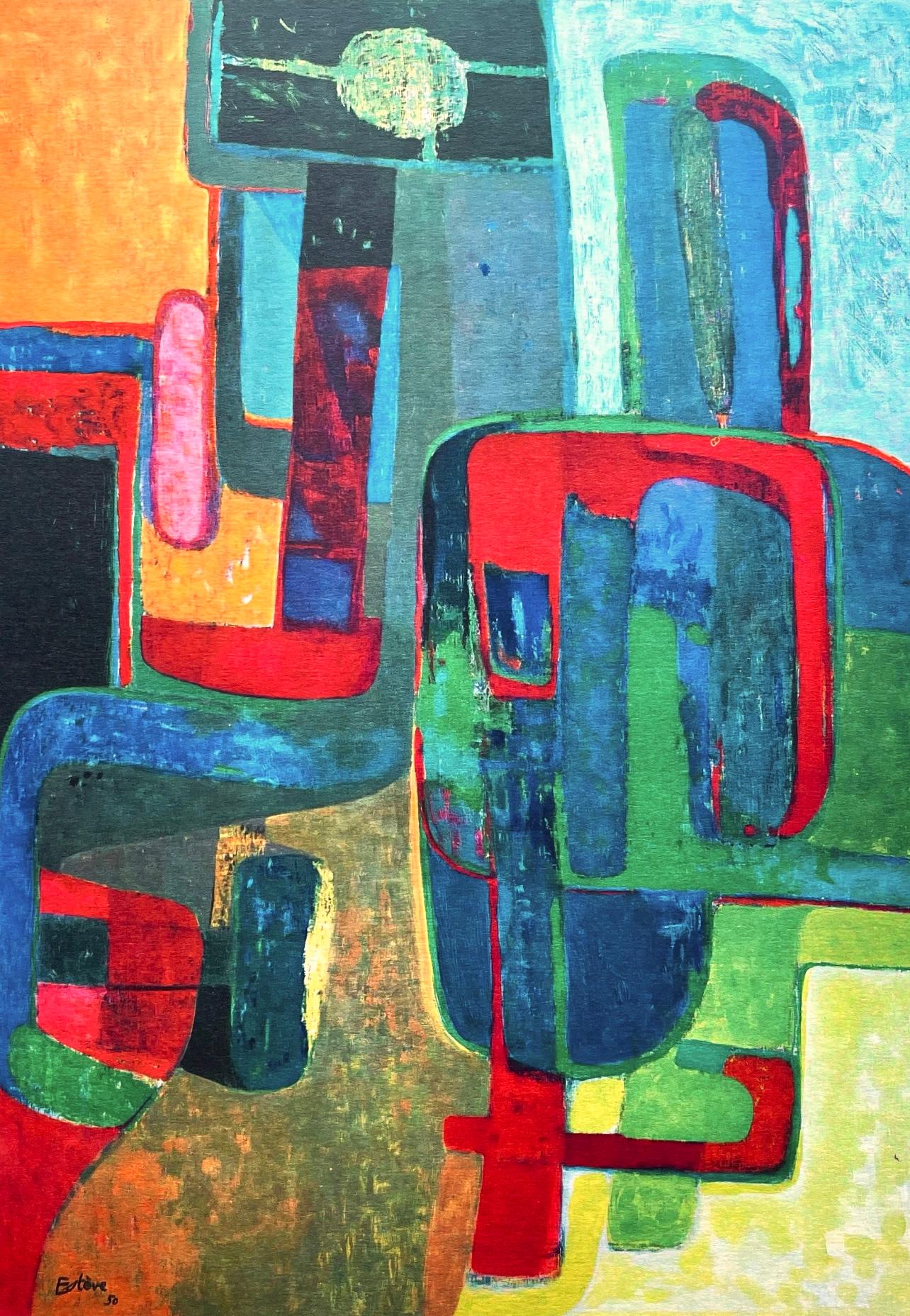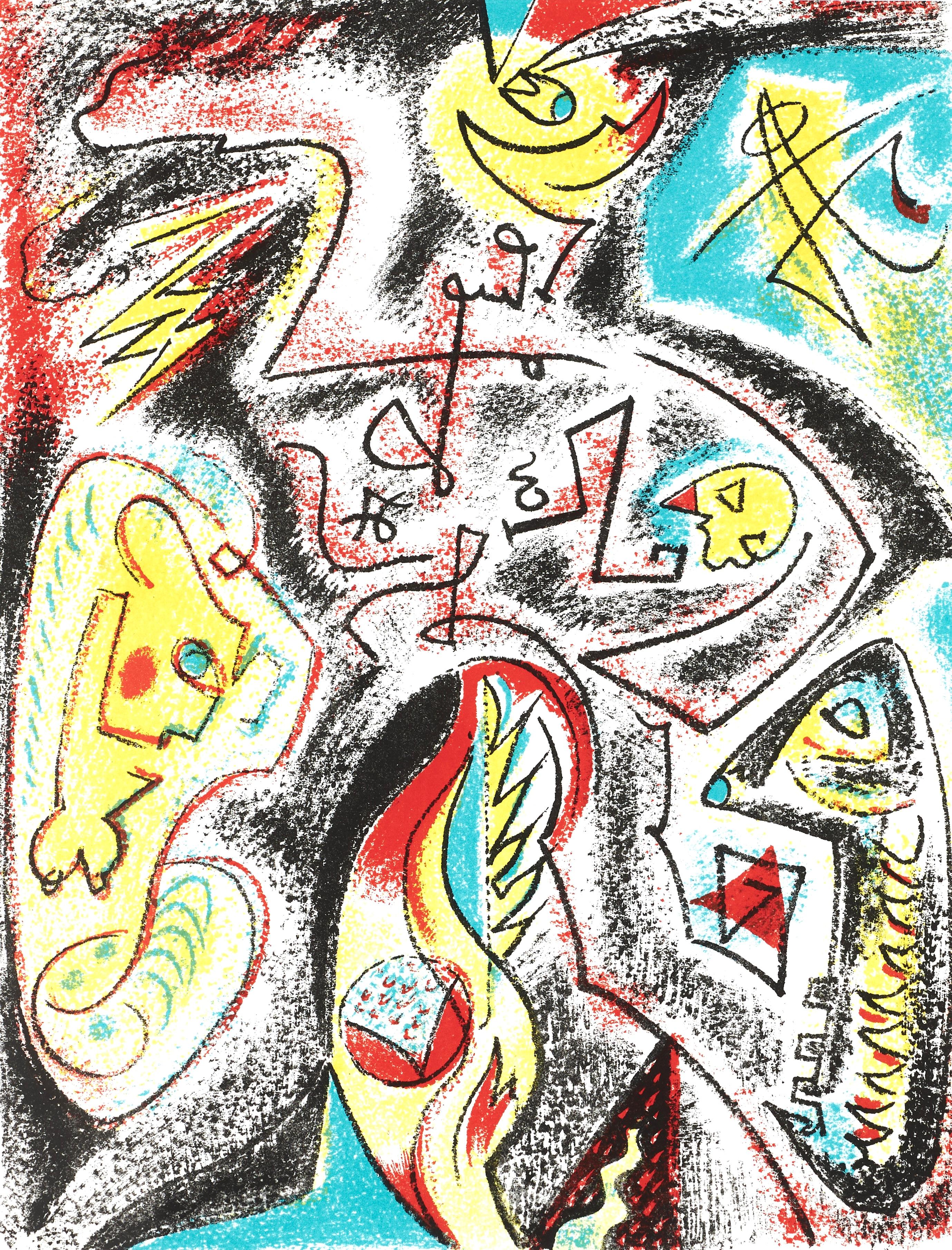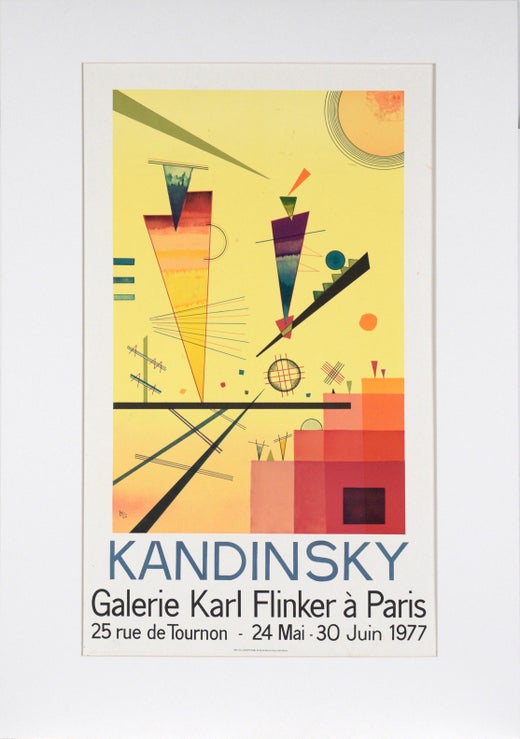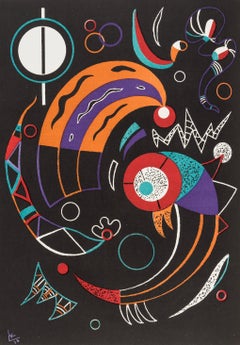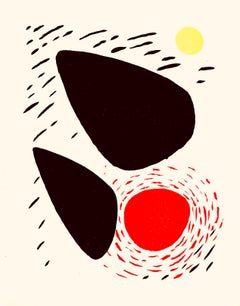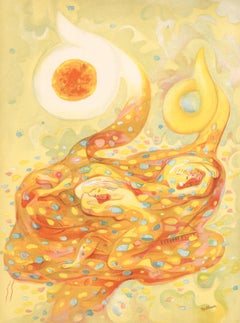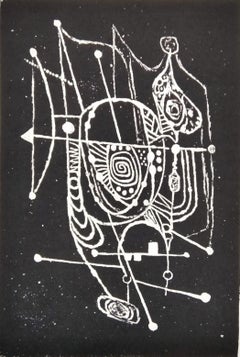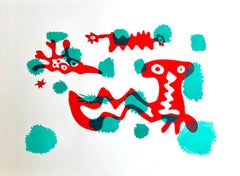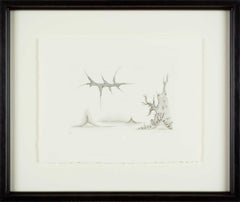Wassily KandinskyLes étoiles, Verve: Revue Artistique et Littéraire1938
1938
Informazioni sull’articolo
- Creatore:Wassily Kandinsky (1866 - 1944, Russo)
- Anno di creazione:1938
- Dimensioni:Altezza: 35,56 cm (14 in)Larghezza: 26,04 cm (10,25 in)
- Tecnica:
- Movimento e stile:
- Periodo:
- Condizioni:
- Località della galleria:Southampton, NY
- Numero di riferimento:1stDibs: LU1465216344802
Wassily Kandinsky
"Il colore è un mezzo per esercitare un'influenza diretta sull'anima", scrisse il pionieristico artista astratto Wassily Kandinsky. Il pittore e teorico di origine russa ha dedicato la sua vita all'utilizzo di composizioni astratte di forme e colori per esprimere emozioni profonde e per rappresentare il linguaggio della musica attraverso le immagini.
Kandinsky fece parte di un momento cruciale della storia dell'arte - l'inizio del XX secolo - che vide l'ascesa di movimenti come il Cubismo. Abbracciò stili come il Surrealismo e il Fauvismo e fu una figura di spicco nel riunire Der Blaue Reiter (il nome significa "Il Cavaliere Azzurro" dal nome di uno dei dipinti di Kandinsky) nel 1911, un gruppo di artisti d'avanguardia a Monaco di Baviera, tra cui Paul Klee e Franz Marc, che esploravano concetti spirituali attraverso la loro arte come risposta al materialismo dell'epoca. Kandinsky tenne anche dei corsi di disegno analitico e di colore presso il Bauhaus . An He fu incaricato dal fondatore e architetto Walter Gropius di insegnare a Weimar nel 1922. An He insegnò in tutte e tre le sedi della leggendaria scuola e rimase con l'istituzione fino alla sua chiusura forzata da parte del partito nazista a Berlino.
L'artista aveva la rara e insolita caratteristica della sinestesia , la capacità neurologica di percepire le cose utilizzando più sensi. Nel caso di Kandinsky, si trattava del dono di "vedere" la musica e la musica compariva in ogni aspetto del suo lavoro, compresi i titoli delle serie "Composizioni", "Improvvisazioni" e "Impressioni". Una volta descrisse l'esperienza della pittura utilizzando una metafora musicale: "Non pensavo a case e alberi, disegnavo linee e bolle colorate sulla tela con la mia spatola e le facevo cantare con la stessa potenza con cui sapevo farlo".
Sebbene Kandinsky non sia il primo artista astratto - il pittore di orientamento mistico Hilma af Klint aveva realizzato arte non rappresentativa ben prima di lui - ha certamente avuto il maggiore impatto sull'affermazione dello stile. I suoi dipinti hanno ispirato artisti del calibro di Jackson Pollock, Willem de Kooning e altri espressionisti astratti. Dal suo Senza titolo (primo acquerello astratto) dipinto nel 1910 alle opere future, al suo modo unico di usare il colore e alla sua predisposizione per composizioni audaci e sperimentali, Kandinsky è una delle figure più importanti dell'arte del primo Novecento.
Trova opere d'arte originali di Wassily Kandinsky, tra cui dipinti e stampe , su 1stDibs.
- SpedizioneRecupero del preventivo…Spedizione da: Southampton, NY
- Politica di reso
Altro da questo venditore
Mostra tuttoAnni 1930, Moderno, Stampe astratte
Litografia
Anni 1950, Surrealismo, Stampe astratte
Litografia
Anni 1930, Surrealismo, Stampe astratte
Litografia
Anni 1930, Moderno, Stampe astratte
Litografia
Anni 1960, Moderno, Stampe astratte
Litografia
Anni 1960, Surrealismo, Stampe astratte
Litografia
Ti potrebbe interessare anche
Anni 2010, Contemporaneo, Dipinti astratti
Legno, Tecnica mista
Anni 1970, Astratto, Stampe astratte
Litografia
Anni 2010, Astratto, Stampe astratte
Schermo
Anni 1950, Surrealismo, Stampe astratte
Cotone, Carta, Puntasecca, Acquaforte
Anni 1970, Astratto, Stampe astratte
Litografia
Fine XX secolo, Astratto, Stampe astratte
Xilografia
